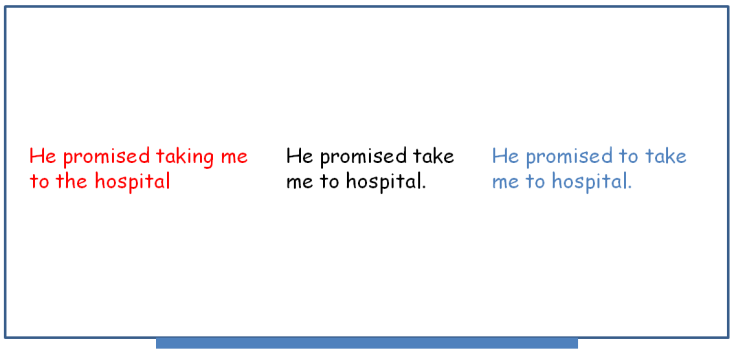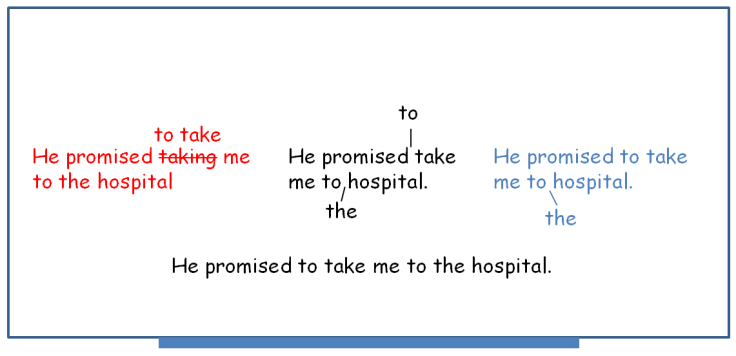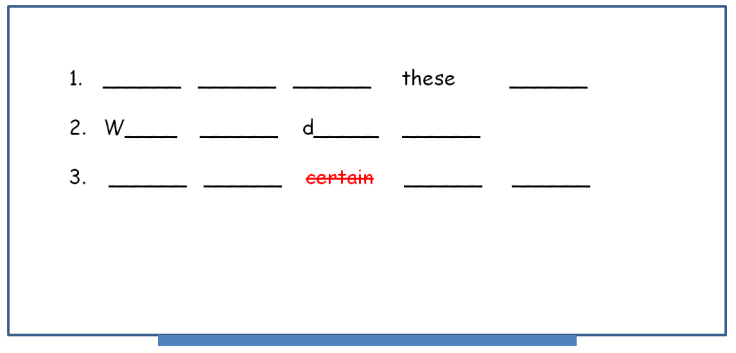I think it can be extremely useful to include additional steps in your feedback to allow students to self-correct. If students are given a chance to examine, and re-examine, their own work, they are more likely to spot mistakes and learn from them.
In this post I’m going to share a few ideas for doing this with short, closed questions, where one answer is right. Some of these extra steps can also be used to give early finishers an additional task.
Obviously, one of the best ways to help students to reconsider their answers is to check with their partner. So, in each of the activities I’m assuming that they’re working together and discussing their answers, as well as swapping partners from time to time.
Note: If you observe your students getting almost 100% in an activity, adding an extra stage for self-correction is obviously a bit redundant.
Answer budget
Give the students the number of each answer they need to complete the task correctly. For example, in a multiple choice task where they need to choose between ‘A’, ‘B’, ‘C’ or ‘D’ for each question I write the following on the board:
2 x A
3 x B
2 x C
1 x D
They can then check their answers and add up the letters. If they have the wrong number of each letter, they can identify where their mistakes may be. This is particularly helpful if you’ve noticed a lot of mistakes in your monitoring, where students may need to completely rethink their answers.
Alternatively, while monitoring you can let each pair know how many questions they’ve got wrong without saying which ones: “I think I can see 2 mistakes.” This motivates early finishers to go through each answer again.
On the board
In activities where the output is a set of sentences using the target language, there may be a range of mistakes being made. It can be useful to get their answers on the board so that they can analyse their work together.
I put students into three groups and give each group a board pen. Each group compares their answers and one student from each group writes their choice for best answer on the board:

Now students in each group have a minute to confer and decide if they want to change their sentence. This gives each group a chance to self-correct using other answers as models.

If your students need additional help, you can add annotations to highlight problem areas. This is especially relevant if a particular language point is proving difficult for a majority of your students.
You can then move onto the next sentence. You should find that students will realise the mistakes they’re making more and more as activity continues, and that you won’t need to go into as much detail with the later answers in the exercise.
Clues
As you’re monitoring, drop hints and give clues to point students in the right direction. If you notice multiple students making the same mistakes, add these clues to the board. Clues can include; the starting letter, number of words, pointing out an incorrect answer or anything that gets students to reconsider what they’ve written.
If my students are struggling with a set of sentence transformations in an FCE class, my board might look like this:

This helps them work out their mistakes, whether it’s because of word order, an incorrect collocation or a missing word. Also, the starting letter might be the little push they need to figure out the whole answer.
Finally
If students really mess up an activity, there’s a chance to effectively redo the same activity with additional support, and build students’ understanding and confidence.
I found these extra steps really helpful with exam classes, where I wanted to help students to improve their strategies for coming up with a final answer. Ideally, students will improve their ability to self-correct, while still trusting their instincts and not taking too long to complete tasks.
There are lots more ideas and activities on the site. You can start by checking out the front page – www.teachinggamesefl.com
To get activities emailed to you, follow the site by clicking the box below the comments. You can also find me on Facebook and follow me on Twitter.
Do you have any self-correction tips? Post them in the comments below!
Thanks for reading

August 22, 2018 at 9:02 am
Great ideas here, thank you. I’d like to encourage more self-correction, especially among my exam groups, to teach them an important skill that will surely be useful during an actual exam.
LikeLike
May 18, 2020 at 8:03 am
I’ve just stumbled across your blog whilst doing some research for my own lessons and I really like your ideas. Like Gosia, I also try and encourage self-correction in my B1/2 and exam classes, but with younger learners and A1/2 I’m looking for more effective ways to use error correction. Thanks!
LikeLiked by 1 person
May 21, 2020 at 8:51 am
Thanks! That’s great to hear 🙂
LikeLiked by 1 person